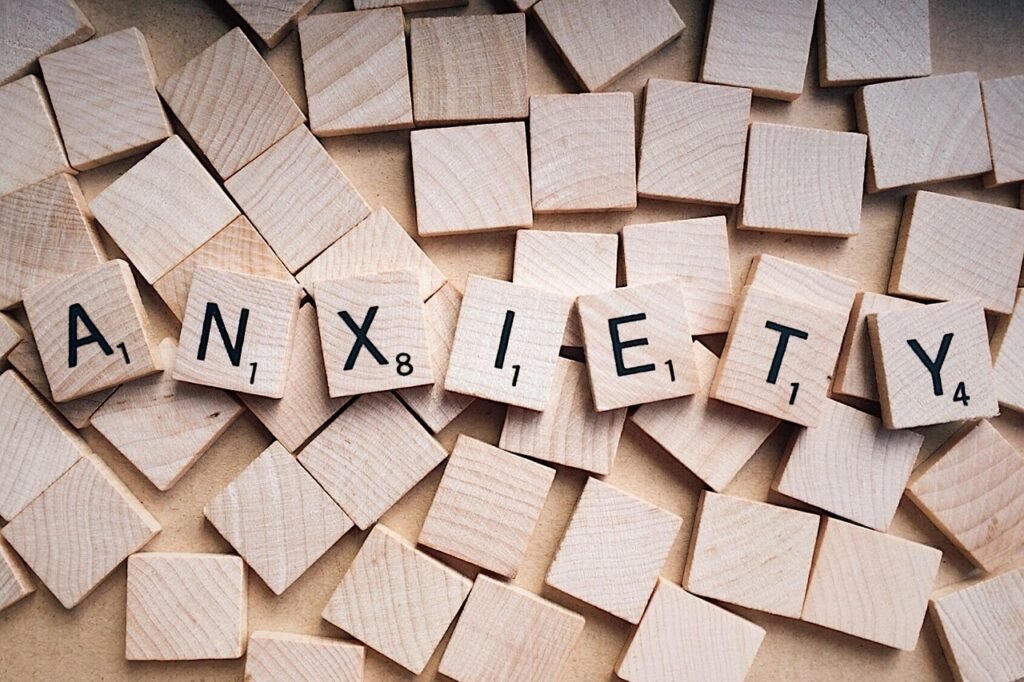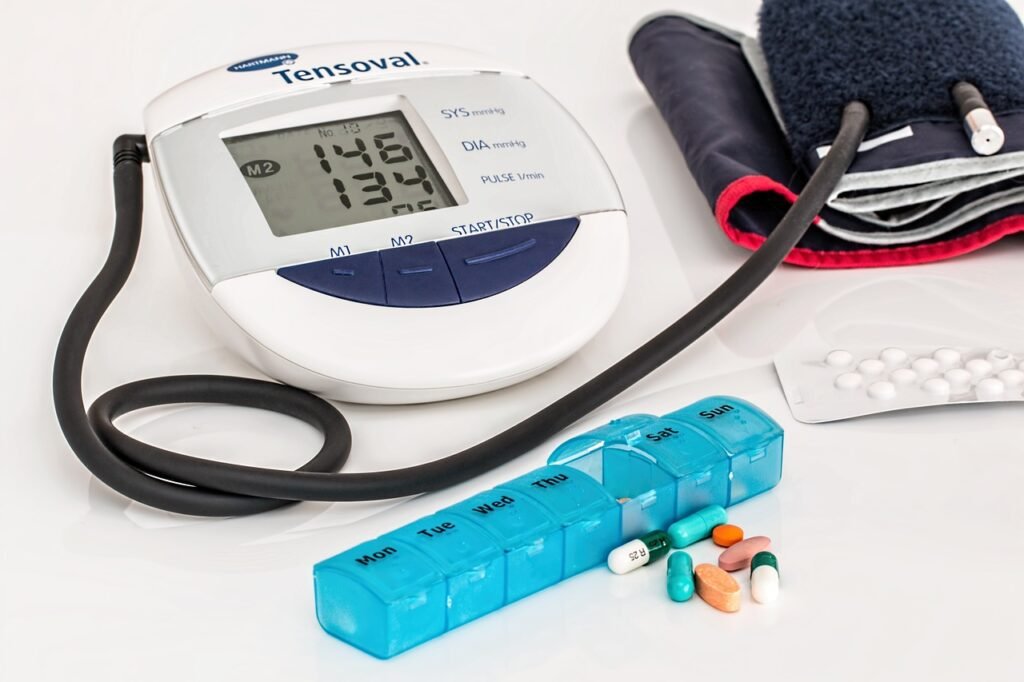
Intro
Does Xanax lower blood pressure? This is a question many individuals consider when exploring options to manage their anxiety and its physiological effects. Xanax, known generically as alprazolam, is a widely prescribed medication for anxiety and panic disorders. While it’s primarily known for its calming effects, there’s interest in understanding whether it also impacts blood pressure. This blog post will delve into the relationship between Xanax and blood pressure, exploring how quickly it may lower blood pressure and providing real-life examples and expert insights.
Understanding How Xanax Works in the Body

Xanax, also known by its generic name alprazolam, is classified as a benzodiazepine.
This class of medications works by amplifying the effects of a neurotransmitter called gamma-aminobutyric acid (GABA).
GABA’s primary function in the brain is to inhibit excessive neural activity, producing a calming effect.
When you take Xanax, it enhances GABA’s activity, which leads to reduced brain activity.
This reduction can help alleviate symptoms of anxiety and panic disorders.
By promoting a state of relaxation, Xanax can help ease the physical symptoms of anxiety, such as elevated heart rate and muscle tension.
These physiological changes can indirectly contribute to a decrease in blood pressure, especially in situations where anxiety spikes are a primary cause.
However, it’s crucial to remember that Xanax is designed primarily to manage anxiety and panic, not to treat high blood pressure directly.
When you take a Xanax pill, it is rapidly absorbed into the bloodstream, leading to noticeable effects within 1-2 hours.
The medication’s impact on the brain helps to mitigate the immediate stress response, which can be beneficial for those experiencing acute anxiety episodes.
Nevertheless, Xanax’s primary role is to manage anxiety symptoms, and any effects on blood pressure are secondary to its main purpose.
The Link Between Anxiety and Blood Pressure

Anxiety and stress are natural responses to challenging situations, but when these feelings become chronic, they can have a significant impact on your health.
One of the ways anxiety affects the body is through its influence on blood pressure.
When you’re anxious or stressed, your body releases stress hormones like adrenaline and cortisol.
These hormones prepare you for a “fight or flight” response by increasing your heart rate and constricting your blood vessels, which can cause a temporary spike in blood pressure.
Over time, if anxiety and stress are not managed, this temporary increase can lead to more persistent high blood pressure, or hypertension.
It’s a cycle that can be difficult to break.
Chronic anxiety keeps the body in a heightened state of alertness, perpetually releasing stress hormones and keeping blood pressure elevated.
By managing anxiety effectively, you can help mitigate its impact on blood pressure.
Medications like Xanax, which promote relaxation and reduce anxiety, can play a role in breaking this cycle.
When anxiety is reduced, the body is less likely to produce excessive stress hormones, leading to a more stable blood pressure level.
However, it’s important to address anxiety as part of a broader treatment plan for optimal health outcomes.
Initial Effects of Xanax on Blood Pressure

When Xanax is taken, it starts to work relatively quickly, with noticeable effects often occurring within 1-2 hours.
As Xanax helps to alleviate anxiety symptoms, it can also mitigate the stress responses that cause temporary spikes in blood pressure.
This can be particularly beneficial for those who experience high blood pressure as a direct result of acute anxiety episodes.
By promoting relaxation and reducing anxiety, Xanax may contribute to lowering blood pressure during these episodes.
However, its primary role remains focused on anxiety management, and any effects on blood pressure are secondary.
The rapid absorption of Xanax into the bloodstream leads to a quick onset of its calming effects.
This can be particularly helpful for individuals dealing with sudden bouts of severe anxiety, which often accompany elevated heart rates and increased blood pressure.
By easing these anxiety symptoms, Xanax can help the body return to a more relaxed state, thereby reducing the temporary rise in blood pressure caused by stress.
It’s important to remember, though, that individual responses to Xanax can vary, and the extent of its impact on blood pressure will differ from person to person.
Always consult a healthcare provider to tailor the treatment to your specific needs.
Short-Term Use and Blood Pressure Reduction

When Xanax is used for short-term relief, its primary function is to reduce anxiety symptoms.
As a result, for individuals whose high blood pressure is triggered by acute anxiety, this reduction in anxiety can lead to a corresponding decrease in blood pressure.
The medication’s calming effects, which typically begin within 1-2 hours of ingestion, help to alleviate the physiological responses to stress, such as increased heart rate and constricted blood vessels.
These changes can create a more relaxed state, potentially lowering blood pressure in the process.
It’s worth noting that the degree to which Xanax lowers blood pressure varies from person to person.
Factors such as individual health conditions, the severity of anxiety, and the specific dosage of Xanax all play a role in determining its effectiveness.
Some individuals may experience a noticeable drop in blood pressure during episodes of acute anxiety, while others might not see as significant a change.
Importantly, while Xanax can offer immediate relief from anxiety-induced blood pressure spikes, it should be part of a broader, carefully monitored treatment plan.
Healthcare providers may recommend Xanax as a temporary measure while exploring other long-term strategies to manage both anxiety and blood pressure, ensuring a comprehensive approach to overall health and well-being.
Long-Term Use and Blood Pressure Impact

Long-term use of Xanax is generally discouraged due to the risk of developing tolerance and dependence.
When used over extended periods, the body may become less responsive to the medication’s effects, diminishing its ability to alleviate anxiety and its secondary impact on blood pressure.
This can lead to the need for higher doses to achieve the same effect, increasing the risk of side effects and dependence.
Chronic use of Xanax can also result in withdrawal symptoms if the medication is suddenly discontinued.
These symptoms can include increased anxiety, agitation, and even spikes in blood pressure, counteracting the initial benefits the medication provided.
Therefore, it’s crucial to follow a healthcare provider’s guidance when considering the long-term use of Xanax, especially if it’s part of a strategy to manage both anxiety and blood pressure.
For those needing long-term anxiety management, alternative treatments such as cognitive-behavioral therapy (CBT), lifestyle changes, and other medications with a lower risk of dependence may be recommended.
Healthcare providers may also explore options like SSRIs or SNRIs, which are less likely to result in tolerance and dependence and can be more sustainable for long-term use.
Ultimately, while Xanax can offer short-term relief, its role in long-term blood pressure management is limited and requires careful consideration and medical supervision.
Dosage and Its Role in Blood Pressure Changes

The dosage of Xanax can play a significant role in its effectiveness for anxiety management and its secondary impact on blood pressure.
Typically, healthcare providers aim to prescribe the lowest effective dose to balance efficacy and minimize risks.
A standard starting dose for anxiety might range from 0.25 mg to 0.5 mg, taken up to three times daily, but individual needs can vary.
Higher doses of Xanax may lead to more pronounced calming effects, which can help reduce anxiety-induced spikes in blood pressure.
However, increasing the dose also raises the potential for side effects such as drowsiness, dizziness, and dependency.
This is why it’s crucial to follow your healthcare provider’s recommendations closely and to not adjust the dosage without medical advice.
For those experiencing severe anxiety episodes that significantly impact blood pressure, a higher initial dose might be considered.
Yet, this should be a carefully monitored decision to avoid the risk of tolerance and dependency.
On the other hand, for mild anxiety, a lower dose might be sufficient to achieve the desired effects without unnecessary exposure to higher medication levels.
Individual responses to dosages can vary widely, making personalized treatment plans essential.
Factors like age, overall health, and concurrent medications can all influence how one responds to Xanax, emphasizing the importance of a tailored approach in managing both anxiety and blood pressure.
Individual Differences in Response to Xanax

Responses to Xanax can differ widely from person to person.
These differences can be attributed to a variety of factors, including genetics, overall health, and any other medications being taken.
For instance, some individuals might experience a significant reduction in anxiety and a corresponding decrease in blood pressure, while others might not notice such pronounced effects.
Age and lifestyle can also influence how someone reacts to Xanax.
Younger individuals with a generally healthy lifestyle might respond differently than older adults or those with chronic health conditions.
It’s also worth noting that concurrent use of other medications can affect how Xanax works in your body.
Interactions between Xanax and other drugs can either enhance or diminish its effects, making it crucial to communicate openly with your healthcare provider about all medications you’re taking.
This tailored approach ensures that your treatment plan is as effective and safe as possible.
By closely monitoring your response to Xanax, your healthcare provider can make any necessary adjustments to better manage your anxiety and its impact on blood pressure.
Combining Xanax with Other Blood Pressure Medications

Combining Xanax with other blood pressure medications requires careful consideration and close monitoring by a healthcare provider.
The interaction between Xanax and other medications can lead to varying effects, potentially enhancing or diminishing the efficacy of either drug.
When Xanax is taken alongside antihypertensive medications, it’s crucial to monitor blood pressure regularly to ensure that levels remain within a safe range.
Combining these medications can sometimes lead to excessive lowering of blood pressure, causing symptoms like dizziness or fainting.
Additionally, other potential side effects should be considered.
For example, both Xanax and certain blood pressure medications can cause drowsiness, and their combined effect might amplify this, affecting daily activities and overall safety.
Therefore, always consult with a healthcare provider who can adjust dosages appropriately and provide personalized advice based on individual health conditions and medication regimens.
Clear communication about all medications being taken is essential to avoid harmful interactions and achieve the best therapeutic outcomes.
Potential Side Effects and Considerations

Xanax, like any medication, carries potential side effects that users should be aware of.
Common side effects include drowsiness, dizziness, and possible dependency, which can interfere with daily activities and overall safety.
Another consideration is the risk of withdrawal symptoms if Xanax is discontinued abruptly after long-term use.
These symptoms can include increased anxiety, agitation, and even spikes in blood pressure, which could counteract the initial benefits of the medication.
It’s also essential to be mindful of potential interactions with other medications.
For example, combining Xanax with certain blood pressure medications or other sedatives can amplify drowsiness and dizziness, posing additional risks.
Patients should maintain open communication with their healthcare providers about all medications they are taking to avoid harmful interactions.
This transparency helps ensure that the treatment plan is both effective and safe.
Always follow medical advice when starting or stopping Xanax to manage anxiety and its secondary effects on blood pressure.
Real-Life Examples and Case Studies

Let’s look at some real-life examples to better understand how Xanax might impact blood pressure through its anxiety-reducing effects.
Consider Sarah, a 45-year-old who experiences acute anxiety that often leads to spikes in her blood pressure.
Her doctor prescribed Xanax to help manage her anxiety.
After taking the medication, Sarah noticed that within an hour, her anxiety levels decreased significantly, and her blood pressure readings showed a modest drop.
This was particularly evident during her high-stress periods, such as before important meetings at work.
Another example is Mark, a 60-year-old with a history of hypertension and anxiety.
Mark’s healthcare provider included Xanax in his treatment plan for managing acute anxiety episodes.
During these episodes, Mark found that Xanax helped him feel calmer and more composed, which corresponded with a decrease in his blood pressure.
However, Mark also worked closely with his healthcare provider to ensure his blood pressure remained within a safe range, especially since he was also taking other antihypertensive medications.
These cases illustrate the importance of personalized treatment plans and close monitoring by healthcare providers.
Individual responses to Xanax can vary, emphasizing the need for tailored medical advice to effectively manage both anxiety and blood pressure.
Alternative Methods for Blood Pressure Management

For those looking to manage blood pressure without relying on Xanax, there are several effective alternatives.
Regular physical activity, such as walking, swimming, or cycling, can significantly improve cardiovascular health and help lower blood pressure.
Aim for at least 150 minutes of moderate exercise per week to see benefits.
A balanced diet rich in fruits, vegetables, whole grains, and lean proteins is also crucial.
Reducing salt intake and avoiding processed foods can further help maintain healthy blood pressure levels.
The DASH (Dietary Approaches to Stop Hypertension) diet is a well-regarded nutritional plan specifically designed to combat high blood pressure.
Stress reduction techniques are equally important.
Practices such as mindfulness meditation, yoga, and deep-breathing exercises can promote relaxation and reduce stress-induced blood pressure spikes.
These methods not only improve mental well-being but also have a positive impact on physical health.
Additionally, other medications like ACE inhibitors, beta-blockers, or calcium channel blockers may be prescribed to manage hypertension.
These drugs work differently than Xanax and are specifically designed to address high blood pressure.
Consulting with a healthcare provider can help tailor these strategies to your individual needs, ensuring a comprehensive approach to managing blood pressure effectively.
Whether through lifestyle changes, dietary adjustments, stress management techniques, or other medications, there are multiple pathways to achieving and maintaining healthy blood pressure levels.
Final Thoughts and Recommendations

In conclusion, while Xanax can help lower blood pressure indirectly by alleviating anxiety, it should not be considered a primary treatment for hypertension.
Consulting with healthcare providers is essential to create a comprehensive treatment plan that addresses both anxiety and blood pressure effectively.
Exploring alternative methods for blood pressure management, such as lifestyle changes, dietary adjustments, and stress reduction techniques, can offer long-term benefits.
Combining these approaches with medications specifically designed for hypertension may provide a more sustainable solution.
Remember, individual responses to treatments vary, making personalized medical advice crucial.
It’s important to maintain open communication with your healthcare provider about your symptoms, treatment responses, and any concerns you might have.
This collaborative approach ensures that your health plan is both safe and effective, tailored to your unique needs.
By considering all available options and their potential side effects, you can work towards achieving optimal health and well-being.
